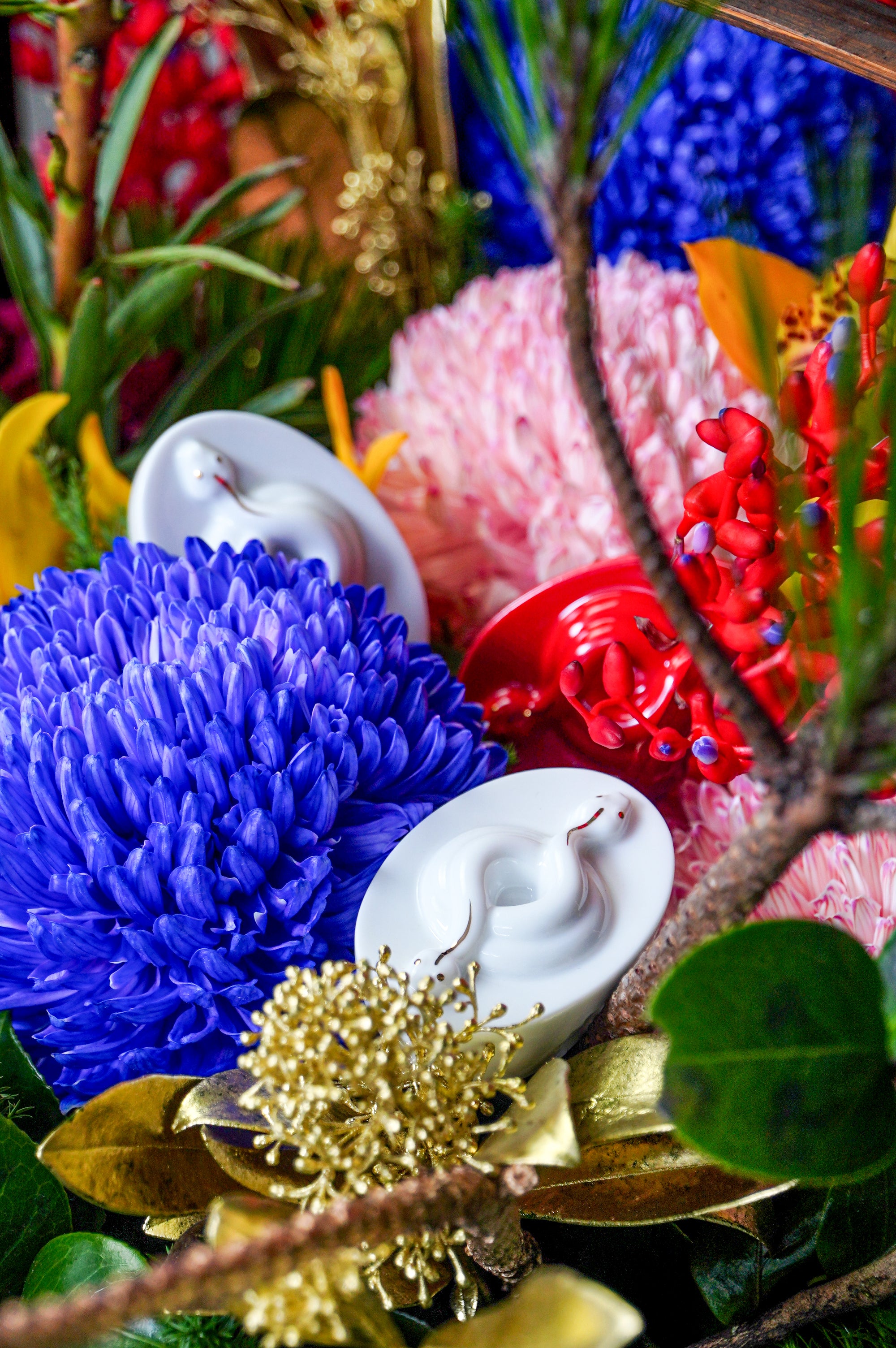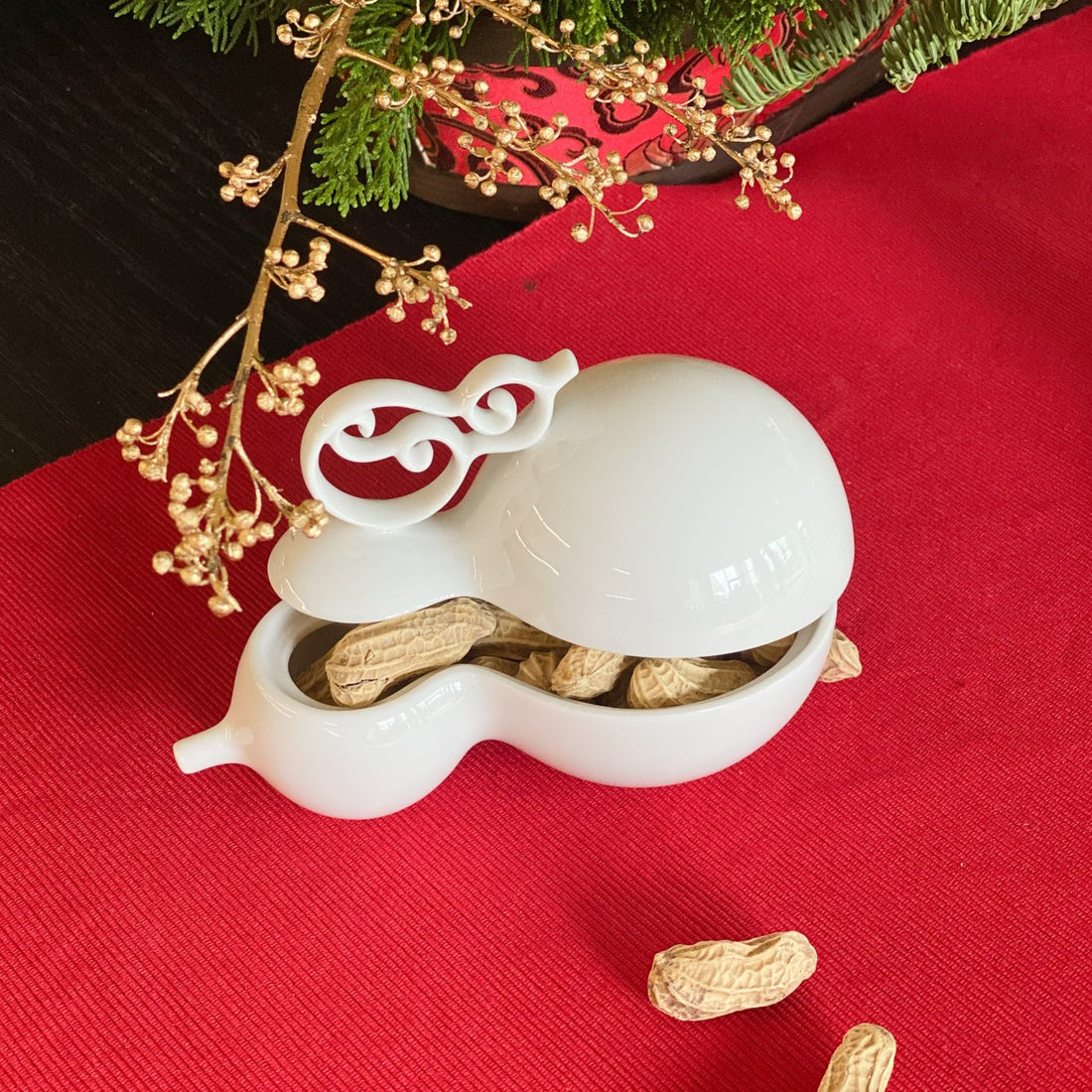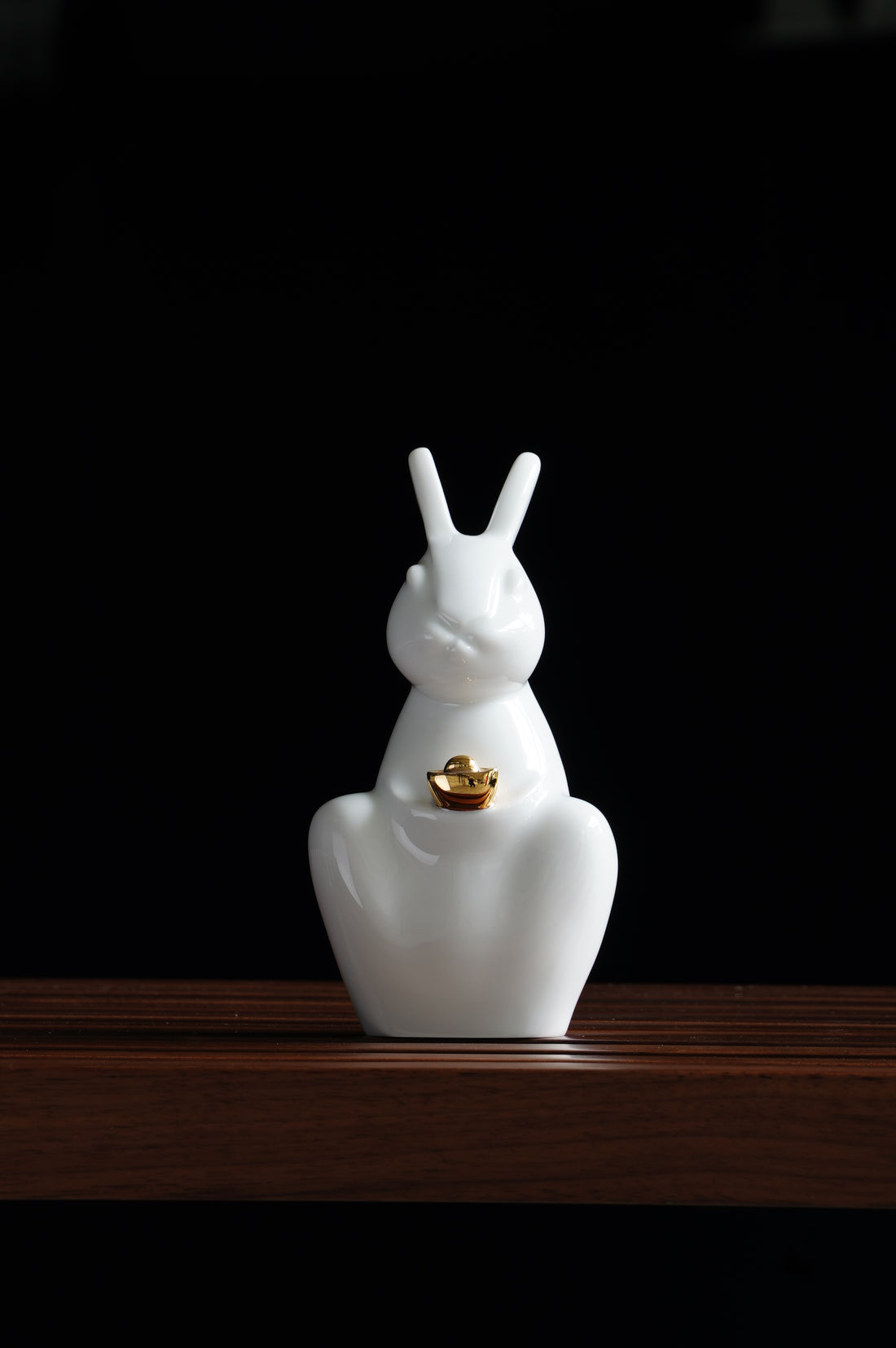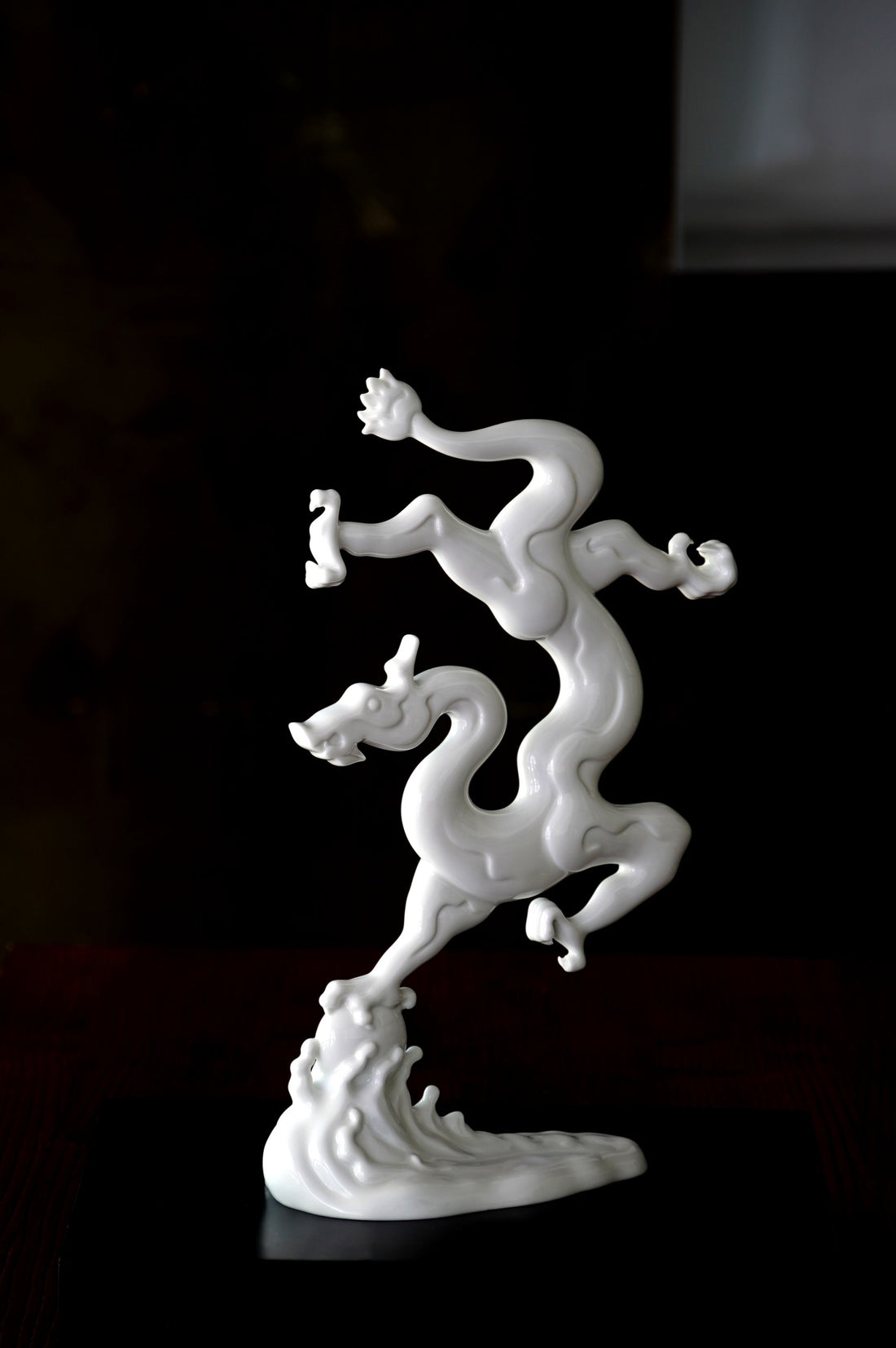“Simply White-Heinrich Wang’s Porcelain Art” and “Chi of Flowers-Asian Collection of Flower Containers” curated by curator Pei-ni Hsieh, former curator of Kaohsiung Museum of Fine Arts and chief of Department of Cultural Affairs in Taipei, opened in September, 2021 in Taipei. The forum was arranged in the circumstances.
“Chi of flowers” gives new senses to the “containers, flowers and space”, inspiring people to cherish appliances. “Simply white” is the aesthetics of Heinrich Wang by changing the forms containers, extending self-awareness to the viewers and reaching harmonization of object and ego. The two exhibitions trigger a new conversation between containers, life and aesthetics. On the forum held at Yi Yun Art during mid-autumn holiday, we invited Heinrich Wang, the director of Newchi, Steven Chen, founder of Yi Yun Art, and curator Pei-ni Hsieh to have a discussion on the experiences of self and objects from the antique flower containers at Yi Yun Art and modern white porcelain by Heinrich Wang.

The following is the summary of the forum:
Steven Chen: Mr. Heinrich Wang started creating white porcelain in 2013 and founded the brand Newchi. Why did you choose the concept of “chi”?
Heinrich Wang: I once fell during the filming of a movie. My body had become still in May and June every year since then. In the fifth year, Hsiao-Fen Lu told me about a skilled osteopathic in Shipai. He told me my circulation of chi was blocked. The therapy was painful but the problem was settled once and for all. People in ancient times proposed the idea of “chi”, which means the spiritual elevation brought about by aesthetics. Yi-Gui Zhou in the Qing Dynasty said that painters could not violate the six “chi”s. The first “chi” is banality, which means the lack of aesthetics. Why do I apply the concept of “chi” in porcelain? Newchi refers to a life space. “New” of course means innovation. Disciplines are also important. Not cutting corners is the rule in making both porcelain and glass. Newchi pursues an innovative “chi”, like the aesthetics in Wei, Jin and Northern and Southern Dynasties. We have various “chi”s in our culture, all of which are positive. How to transform the abstract concept of “chi” into an object is our main focus.
Steven Chen: The reason why we call the exhibition “Chi of Flowers” is the same as what Mr. Wang just said. Chi is circulating although it is invisible. It becomes tangible when it affects people. We hope to turn it into a piece of work by integrating it with flowers and containers. This chi have influence on our space and life, so it is penetrating and circulating.

Heinrich Wang: There are many ways to create art, and everyone
has their own ways. I focus on the shape. It has no language and expression, so
how do you define its “chi”? To creators, or rather, to me, appliances are
motionless, and in order to give it a sense of motion, I have to compress it to make it
less stable. The “chi” I referred to is the movement of circulation. It is
subtle for its balanced but asymmetrical feeling that corresponds to the
tension and flow. We can see the bones from the contour of appliances that present
the movement of “chi”. With different methods to create rhythms and structures,
we can find the circulation of “chi”.
Pei-ni Hsieh:
We can see “aura” as the continuous motion.
Generally speaking, technology can only help us find the proof of our
hypothesis. Lao-Tzu discussed the truth of the universe. It is expanding,
infinite, and without a center. The order can be transformed into fashion. Either
by shaping or fixing it, you can feel it eventually.
Steven Chen:
Heinrich Wang:
When I started working on 1.0, I found many
aesthetic structures in corners and flat surfaces, so I used flat surfaces in
some of the works in 1.0. It is difficult to fire flat surfaces, and I acquired
command of it after completing 1.0. What is the feeling flat surfaces give us?
It is honesty. We often refer to the noble as honest, which is similar to the
aesthetics of unfolded blank paper. Why the noble? It is because we consider a person
good and are willing to befriend him when he is trustworthy. We can transform
this abstract ethical concept into aesthetic images. Porcelain has always been
elegant, and I hope to add some philosophical aesthetics to it, so it can be
both delicate and vigorous.
Steven Chen: In 2.0 “The Noble”, Mr. Wang
created several pieces based on females. The aim of “The noble” is to truthfully
portray an ideal person, feeling or status. In the 3.0 series, I saw impressions
of bronze. In “Vision”, you combined the standing postures and flat
surfaces in 1.0. Please enlighten us about it.

Heinrich Wang: I hope to show another possibility of porcelain with polished skills through the 3.0 series. Porcelain is fragile, and I hope to apply the aesthetics of “potted landscape”. If you like potted landscape, you know that it is elegant, magnificent, and formidable. The branches are dry and slant. The tension and disturbance are important in the aesthetics of potted landscape. I hope I can act as a stepping stone of the breakthroughs and innovations of porcelain and to make people more confident with this material and craft. American historians indicate how China dominated world trade 700 years ago. Gold from Europe and silver from Central and South America flooded into China in exchange of crafts, especially porcelain. However, the most important exchange is not economical, but cultural. This craft has once stood out in the world, so I wonder if there are new possibilities in porcelain that can bring more fascination and imagination. In the series “Vision”, I hope to display the tension with the diversity and contrast of my porcelain. Bronze has a history of 8000 years in our culture, so I always regard it as the most magnificent and impressive. I mean to bring modern imagery and styles to the monotonous bronze with my creation.

The exhibition “The Chi of Flowers” at Yi Yun Art presents profundity with the fragrance of flowers. “The chi of flower” sounds like “flower container”, which refers to Yi Yun Art’s combination of various antique containers and floriculture in Song Dynasty. The beauty of flower containers lies in its pure essence. A unique “chi” is formed with the passing of time, like the aesthetics of “wabisabi” in Japanese culture. Through the "birth, flourishing, withering and death" of flowers, we experience life. "The chi of flowers" is thus formed. In resonance with Newchi founded by Heinrich Wang, "chi" is the exploration and meditation of the root of one's existence and beauty through concepts of art and life. Thanks to Ms. Pei-ni Hsieh, the two exhibitions had such inspirational interaction. We hope we will have more communication and collaboration in the future.










